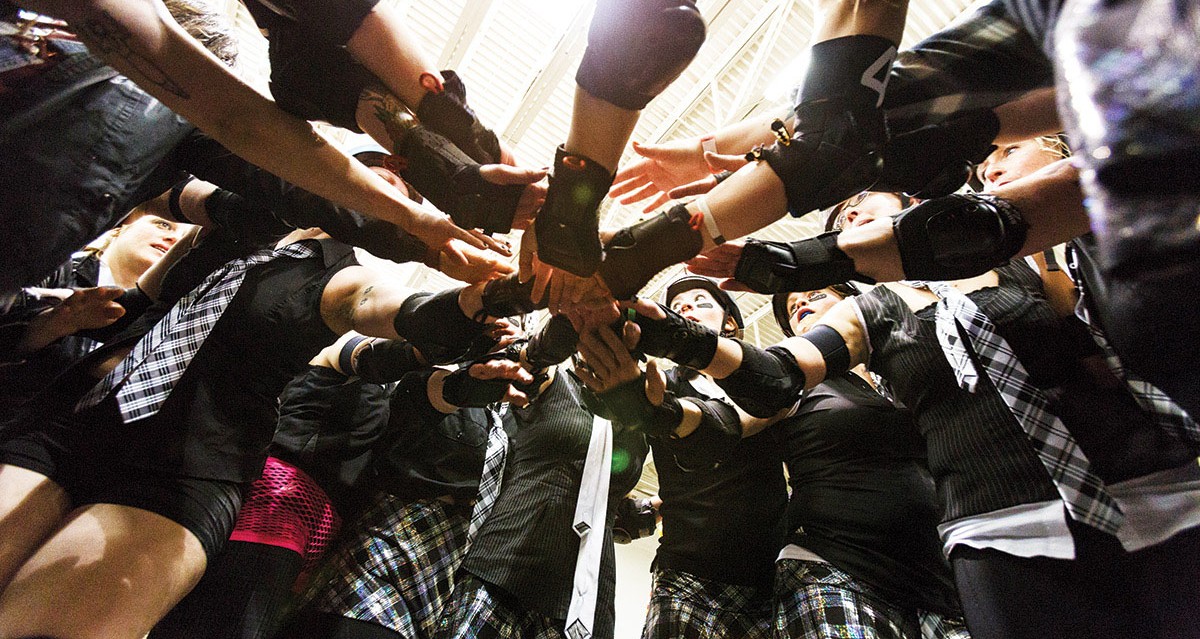
A Rink of One’s Own
UW grads break the rules on what it means to be a woman athlete.
On draft night 2016 for the Mad Rollin’ Dolls, the Vaudeville Vixens turned the dance floor pink.
For a moment, the Vixens took over Tavernakaya, a Japanese restaurant on the Capitol Square that morphs into a night club on the weekends. The team was celebrating its acquisition of three rookies. At the center of the dance floor was One Hit Wanda, drink in the air and a pink feather boa over her shoulders. The party was Wanda’s second draft night — last year she was one of the rookies acquired by the Mad Rollin’ Dolls (MRD), Madison’s flat-track roller derby league. Wanda, now sidestepping her way to the bar, is one of at least 21 MRD skaters who are UW–Madison graduates, students, faculty, or staff. The Madison league — with 139 total members — is a leader in national roller derby culture, helping to refine the rules of the sport to make it more welcoming to transgender athletes.
Roller derby became a fad in the seventies and eighties with shows such as RollerGames, which aired during late-night spots. That type of roller derby involved tilted, figure-eight tracks; half-pipe-style jumps called “walls of death”; and even alligator pits for tiebreakers. “It was essentially [professional wrestling] on skates. They choreographed everything,” says Gaile “Splatter Alice” Schwickrath, general manager and overall head honcho for the Mad Rollin’ Dolls. “Tripping, hair-pulling, the antics … [it] was all practiced that way.”
It wasn’t until the early 2000s that “modern” roller derby emerged and the Women’s Flat Track Derby Association (WFTDA) started up as the international governing body of the flourishing sport. It’s a far cry from the earlier, made-for-TV version of derby; rather, the sport is sort of like an athletic, strategic game of Red Rover in which both sides are skating in the same direction around a flat track. Roller derby’s history in over-the-top performance creates a challenge for current skaters in establishing themselves as legitimate athletes — a battle they’re waging both on and off the track. But some historic holdovers have become cherished traditions today, such as the rite of passage that players have in receiving their “derby names.”
When modern roller derby began in earnest in 2001, it started with the (Austin) Texas Rollergirls — currently ranked sixth. Alice recalls that one of the original Texas Rollergirls, Lucille Brawl, had a sister in Madison who went by the name of Crackerjack.* She became inspired to start a league of her own, and when national-level play began, MRD’s all-star team was among the first to participate. “We’ve been a part of it pretty much since the start of roller derby,” Alice says with pride.
The Mad Rollin’ Dolls are divided into four home teams: the Quad Squad, known for green superhero capes; the Reservoir Dolls, who wear signature white ties; the Unholy Rollers, who show their vampiric affiliation with red; and the hot-pink Vaudeville Vixens. Each December-to-May season, the teams face off in monthly bouts at the Alliant Energy Center’s Exhibition Hall. Teams are ranked based on their records and placed for a semifinal match. The teams that come out on top at the semifinals play each other in the championships. The winning team takes possession of “Leggy” — a plastic leg trophy with a golden kneepad and roller skate — until next season’s championship. When the teams practice for home bouts, they do so on the same track, distinguishable only by the color of their shirts. Even among the hits, blocks, and playful jeers at practice, they are one big, happy family. But it is not that way on draft night.
• • •
You learn to crawl before you walk, and you learn to skate before you play roller derby. Nearly all MRD newcomers start with the Madison Wreckers Roller Derby — “Wreckers” — the recreational component of the league. Once they have their wheels under them, skaters can try out for placement on a home team. Then draft night happens: the teams pick rookies to fill a few precious open spots — starting with last season’s lowest-ranking team, much like the NFL. After getting comfortable with the rules of sport on a home team, there’s yet another chance for advancement within the league. It’s a coveted spot on the Dairyland Dolls, MRD’s “all-star” international travel team, comprising skaters from each of the home teams. The Dolls’ WFTDA ranking is currently 38th out of 320.
Wanda entered the derby world just two years ago, but it didn’t take her long to climb to the league’s highest echelons. After a few months with Wreckers, she was drafted by the Vaudeville Vixens. Three months later, she was tapped for a spot on the “all-star” travel team’s B-roster. This January, she earned a spot on the A-team. It takes most rookies a while to get the skating part down, let alone the ability to block and pass others while on wheels. But skating is what came naturally to Wanda. Before she was One Hit Wanda of the Vaudeville Vixens, she was Alisha Raabe ’14 of UW–Madison’s synchronized figure skating team.
Raabe, who had been figure skating since she was three years old, didn’t feel ready to fully “retire” after graduation. Before her 2014 commencement, she stumbled across the 2009 film Whip It, which stars Kristen Wiig, Ellen Page, Drew Barrymore, and a smattering of B-list celebrities as a rough-and-tumble roller derby team. Interest piqued, Raabe did a quick Google search and found that Madison had a league. “I begged my skating friends to come to tryouts with me, but no one would go,” she laments. But by the time tryouts for the 2015 season came around, Raabe worked up the courage to go on her own.
Most skaters find their way into the derby world in a similar fashion — hearing about it and thinking it’s cool. Lips Macker, alias Jennifer Macke Grutzik ’09, joined Wreckers after graduating from the Wisconsin School of Business and feeling “lost” in the world of adulthood. In 2011, she was drafted to the Reservoir Dolls. Fang Dangled, an Unholy Roller, first learned about Madison’s league when she — Danielle Dannenberg ’09 — was working on a documentary project for a communication arts class. Even the Dairyland Dolls’ head coach, Pretty Reckless, heard about roller derby secondhand. “Reck,” or Jenni Hart ’04 off the track, was working part time for her aunt, Madison chocolatier Gail Ambrosius ’93, along with a now-retired Mad Rollin’ Dolls skater Little Bo Bleep. Reck developed an interest in watching the game and found that she had an eye for the rules. Never having laced up a pair of skates herself, she worked her way from MRD’s bench staff to the league’s head coach.
The Mad Rollin’ Dolls hosted WFTDA’s division- one playoffs last September at the Alliant Energy Center. When Reck started out on the bench, bouts were held at the Fast Forward Skate Center, a small roller rink on Madison’s south side. It’s now the league’s primary practice location.
• • •
The inside of the Fast Forward Skate Center smells exactly like the last rink you were in for a grade-school birthday party. Only, you won’t find any disco lights or bass-heavy remixes. Instead, a whistle blows at a steady cadence and wheels skid. Spaced around the oblong track are four distinct groups: green, black, red, and pink. A skater in a red tank top face-plants by the seating area. As she peels herself off the floor, a skater on the sidelines cheers. The fallen skater nods, exhales deeply, and gets back in line. On the far end of the track where the Vixens are warming up, Wanda (no longer Alisha Raabe ’14) is using every ounce of her body weight to hold back another skater. The gist of the game is relatively simple to understand: two teams play each other for 30-minute halves. There are 14 skaters on each team, and those players each have a specific position — mainly, blockers and jammers. The jammer (demarcated by a large star on her helmet cover) scores points by passing the opposing team’s blockers — the position Wanda is currently in — who have to work together both to help their jammer get through the pack and to stop the opposing jammer from doing the same.
Though it may seem easy to understand on paper, the players silence any ideas of simplicity. WFTDA’s rule book is 83 pages long. “The rules are very dense,” Reck explains. “There are a lot of small caveats.” Keeping the players informed of the rules and out of the penalty box is key to Reck’s job. When Wanda was first drafted, she didn’t have a clue how points were scored. Even now, with two-plus years of experience, she still has trouble keeping up with the game’s nuances.
“Stuff is ever changing,” says Fang, but that’s part of what keeps it interesting. For example, there used to be major penalties (which would send a skater to the penalty box) and minor penalties, four of which added up to one major penalty. If it sounds hard to manage, it was. “It was confusing for the skaters; it was hard on the refs; and the fans didn’t know what the hell was going on,” says manager and skater Splatter Alice. WFTDA heard the complaints and proposed that all penalties be made equal. When rule changes like that are proposed, MRD jumps at the chance to test them out at home bouts. “We’ll take video, we’ll send it in to WFTDA, and they’ll use it as part of their analysis,” says Alice.
As one of the “grandmother leagues” of women’s flat-track roller derby, Madison’s league has also been influential in policy change. One of its recent accomplishments was guiding WFTDA to implement a new gender policy that allows transgender athletes to participate.
• • •
Since its inception, roller derby has pushed the envelope on traditional views of gender roles and women’s place in full-contact sports. “In many ways, the sport in and of itself breaks barriers of masculinity and femininity,” says Gabe Javier, assistant dean of students and director of UW–Madison’s LGBT Campus Center. Because of this, the league is constantly coming up against preconceptions of who a roller derby player is. “Our organization — not just our league, but the global community — is made up of every type of person you could imagine,” Reck says. Yet people outside the sport often have the misconception, she says, “that we’re all gay or we’re all tough and mean.”
That, of course, is not the case. And although the sport is fighting for its place in the mainstream, it maintains and celebrates its history in the counter- culture: a history that has opened up participation to people from all walks of life — and all points on the gender spectrum. But as a sport governed by an organization with women expressly in its title, trans skaters were left to ask where they fit in. And when one of MRD’s own raised the question, a movement started. “They were like, ‘I’m kind of in this place where I don’t know where I land, but I know that I love the sport and I know that I want to play it,’ ” Alice says, recalling their conversation. “So what can we do about that?”
GLAAD, a national organization that works to promote understanding and acceptance of people in the LGBTQ community, defines transgender as “an umbrella term for people whose gender identity and/or gender expression differs from what is typically associated with the sex they were assigned at birth.” Prior to 2014, MRD and other leagues had been following WFTDA’s gender policy, loosely modeled after the International Olympic Committee’s (IOC) “Stockholm consensus” of 2003. It required transgender Olympic athletes to meet a detailed set of criteria, including surgical anatomy changes and years of hormone therapy. WFTDA tweaked the IOC’s policy, requiring that trans skaters provide only verification that their hormones were “within the medically acceptable range for a female.” Although it was slightly more inclusive, WFTDA’s policy still set a precedent for who “counted” as a female and could therefore participate in women’s roller derby. The problem? Female and woman mean two very different things.
“Physical sex, or sex assigned at birth, is distinct from gender,” explains Javier. The terms male and female refer to a person’s sex. Gender, on the other hand, is a matter of identity (man/woman) and expression (masculine/feminine). “It’s hard for people to decouple these three elements of self, but they are distinct, and they are different, and they are all on spectrum,” Javier says.
Though several leagues were outspoken in pushing WFTDA to reexamine its policy, the Madison league wrote its own nondiscrimination policy to include trans athletes. “Roller derby, being do-it-yourself, made-by-us-for-us, had that option to be a safe place for them,” says Alice. She helped to bring in Javier, who personally knew some of the players, to lead a roundtable discussion for the entire league about gender and sports. Players discussed model guidelines, how fairness relates to gender, and “the importance of allowing people to self-identify and affirm their identities across the gender spectrum,” he says. That is the crucial part that the WFTDA policy omitted.
The Mad Rollin’ Dolls’ policy now says that it “will not set minimum standards of femininity” for players who identify as a woman. “If you identify as a woman, you identify with what we are doing and who we are and what we want to accomplish,” says Alice. In September 2016, WFTDA announced a new gender policy that echoes MRD’s own in stating that “if women’s flat-track roller derby is the version or composition” that a skater identifies with, they are eligible to participate.
“This league has decided to take a stand [and be] a role model for other leagues and officiating bodies,” Javier says. “I think that they are really practicing what they preach when they talk about being a team.”
• • •
The temperature inside Tavernakaya rises each minute on draft night 2016. Wanda’s continuous movement contributes to the temperature change as she darts from the bar to the tables to the dance floor and back again. A group of women wearing tiaras and carrying black roses approaches the restaurant’s floor-to-ceiling windows. To a civilian, it looks like a bachelorette party is about to walk in. But when Wanda sees them, she leans back, throws her hands in the air, and hollers, “Ohhhhhh, it’s the Rooooo-llers!”
It feels like a rumble is about to begin. The Unholy Rollers strut in, chins high, and stop in a tight group by the door. The Vixens dance their way into a group at the opposite corner. The bartenders and bouncers exchange glances of confusion, but the mock tension lasts only for about 30 seconds until the Vixens realize that dancing is more important and that the Rollers don’t have drinks in their hands yet. It’s not long before green capes and white ties join the mix. The Mad Rollin’ Dolls family is united.
Chelsea Schlecht ’13 is a writer for On Wisconsin and the editor of the Wisconsin Alumni Association’s magazine Badger Insider, and weekly e-newsletter, the Flamingle.
* This story was updated to include the addition of the names Lucille Brawl and Crackerjack.
Published in the Summer 2017 issue
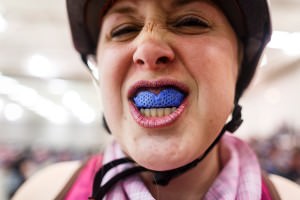
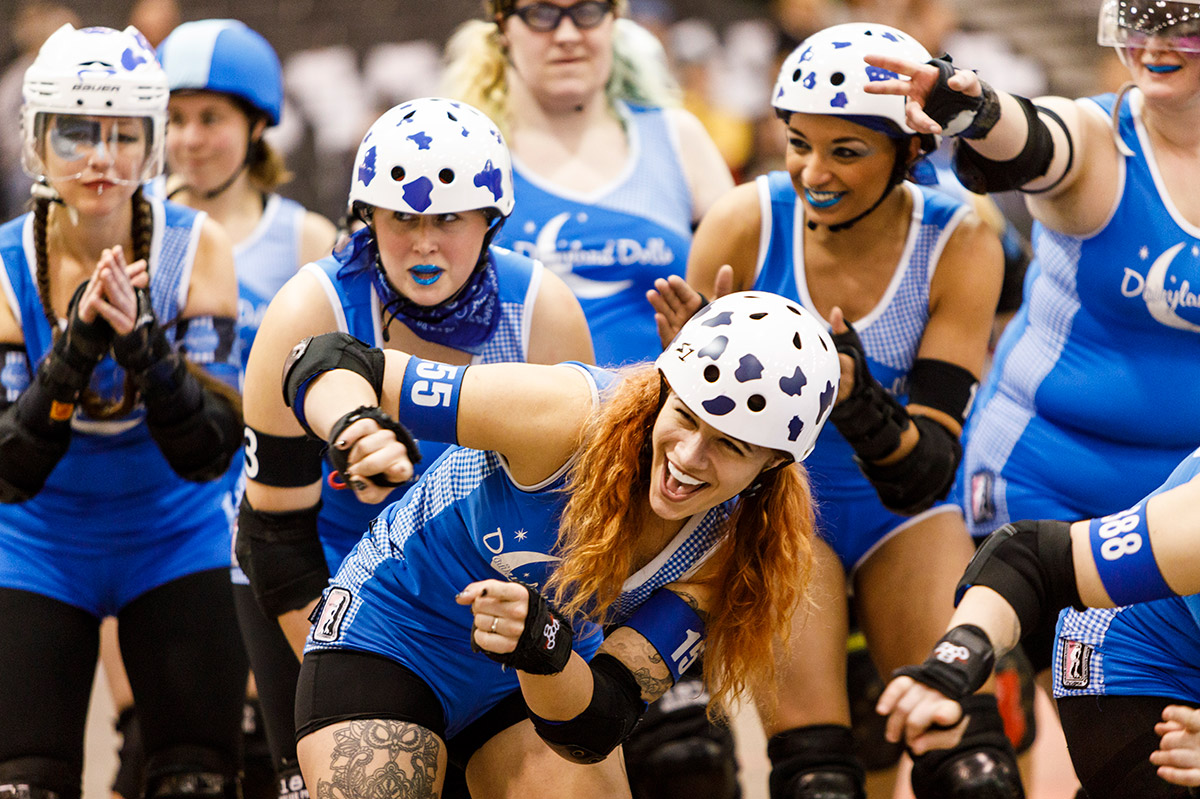
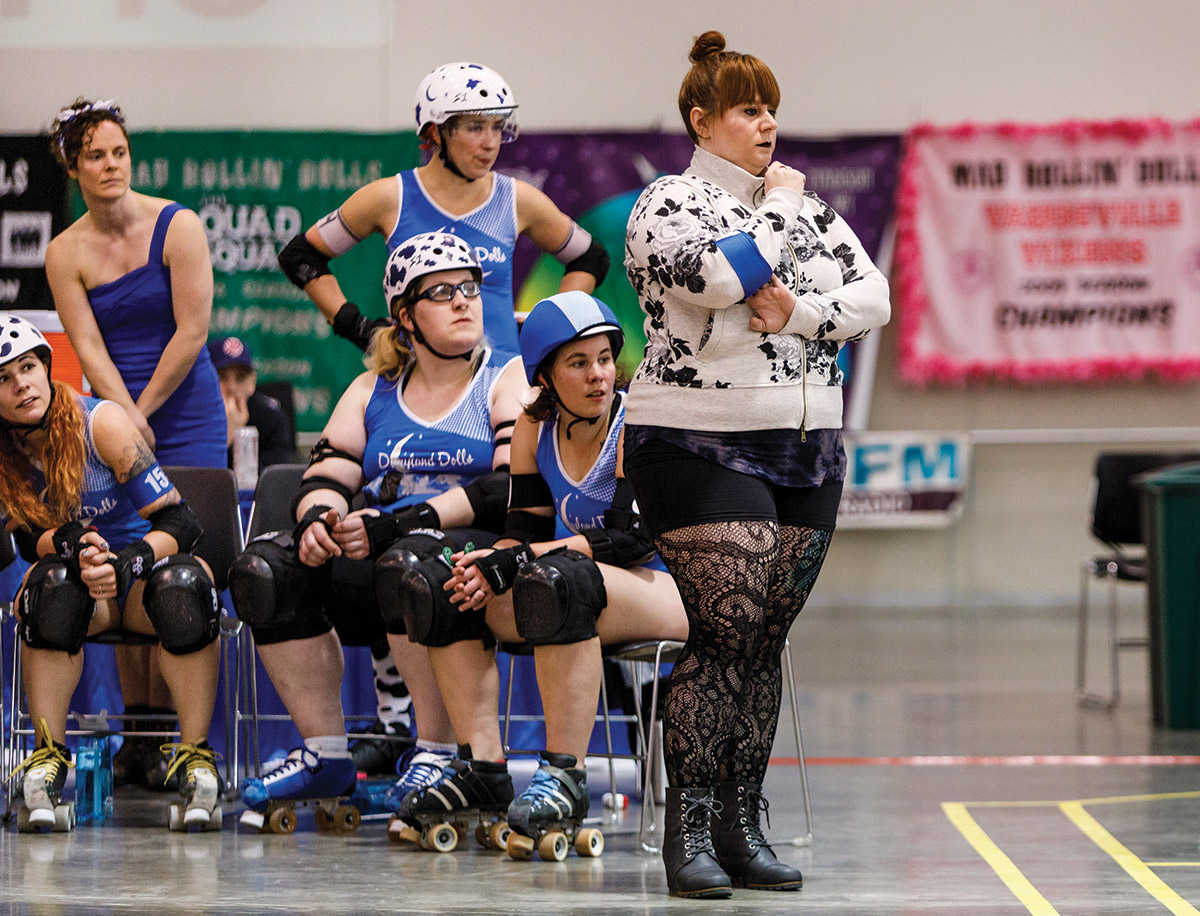
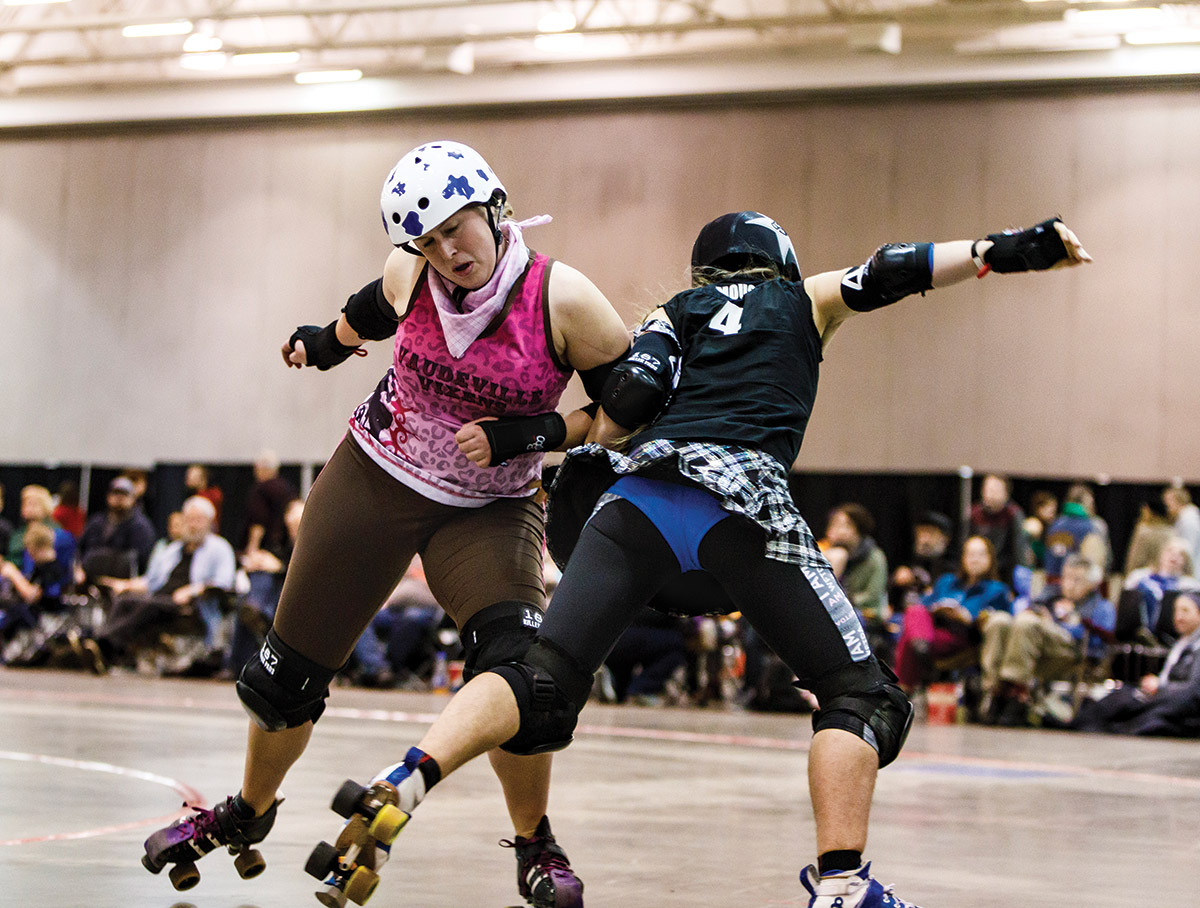
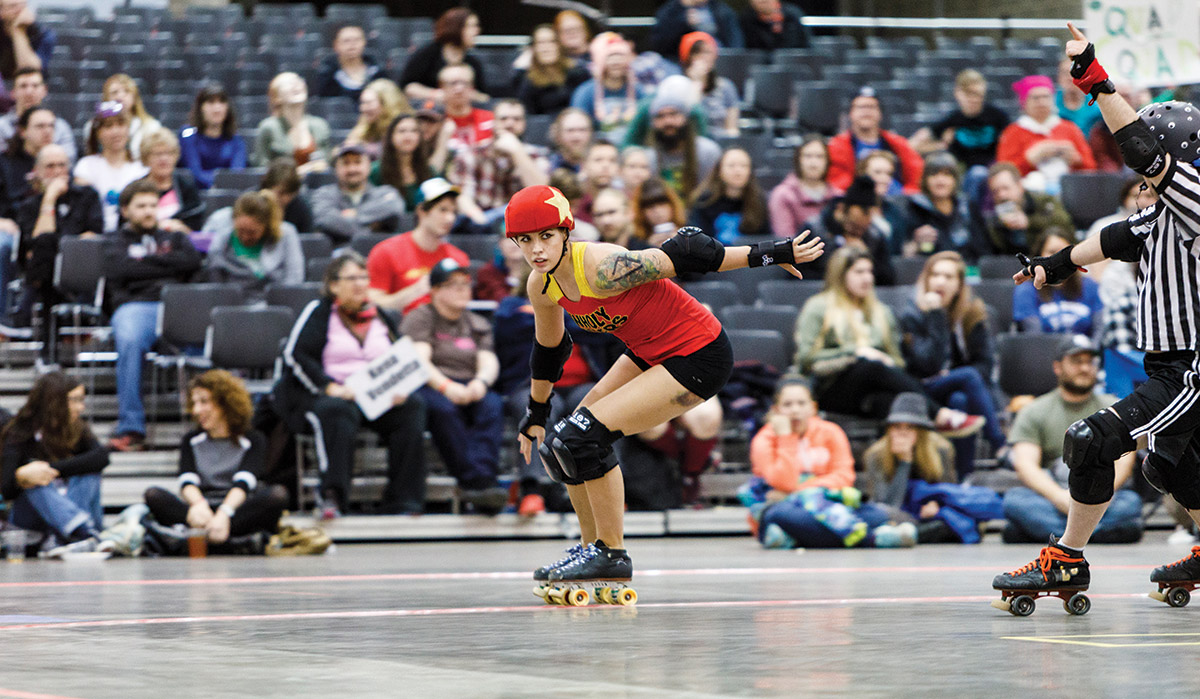
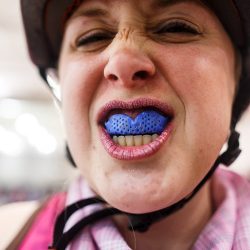

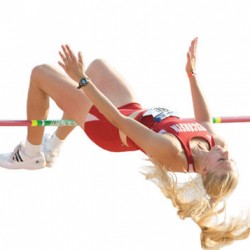
Comments
No comments posted yet.